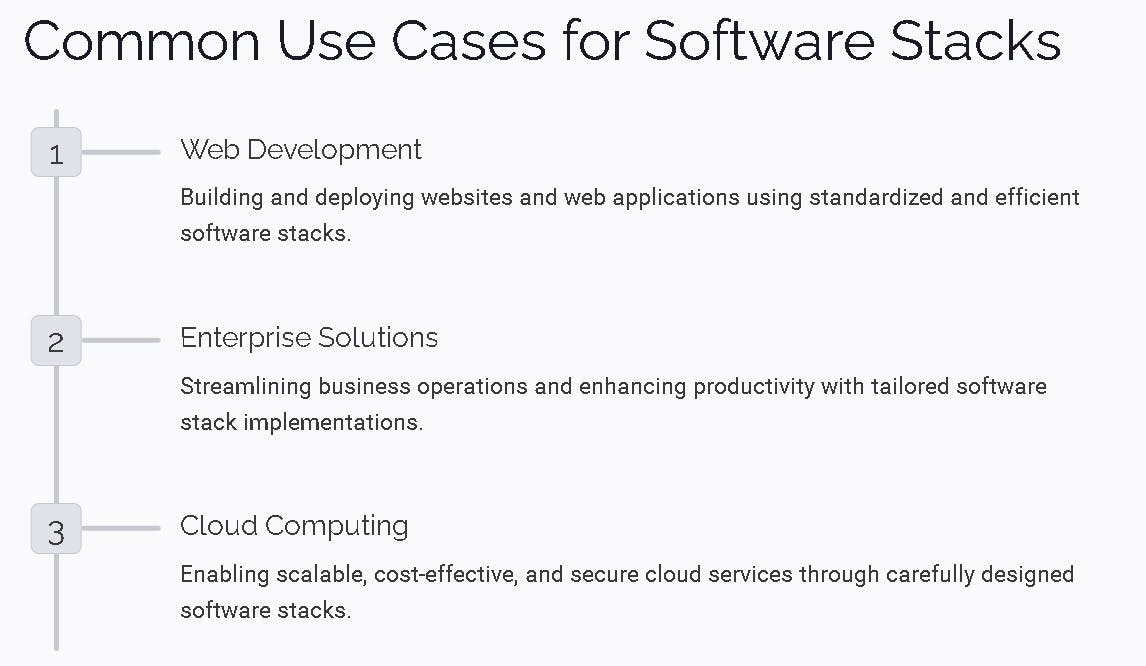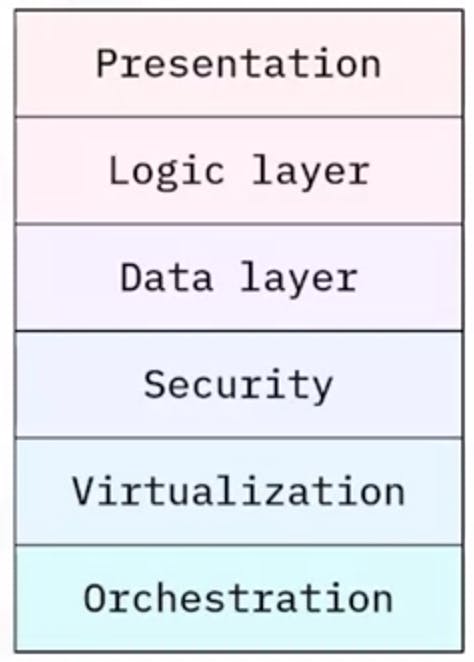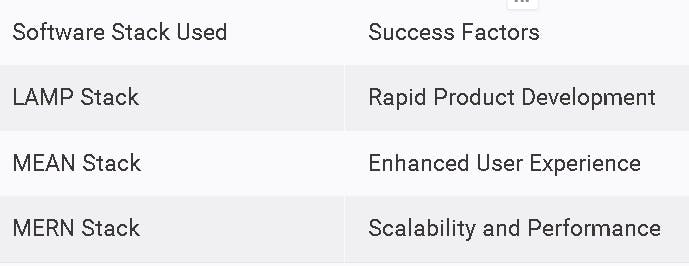Introduction to Software Stack
Software stacks, also known as solution stacks, are sets of software components that work together to support the execution of an application. They typically include an operating system, a web server, a database, and a programming language. Software stacks are the backbone of modern applications and are essential to the development and deployment of reliable and efficient software solutions. Understanding the composition and functionality of software stacks is crucial for developers, system administrators, and IT professionals to optimize their use and performance. The set of individual technologies is stacked in a hierarchy and works together to support the execution of an application. The higher levels in the stack provide tasks or services for the user and the lower levels interact with the computer hardware.

Components of a Software Stack
The core components of a software stack typically include the operating system, the web server, the database server, and the programming language or runtime environment.
Software stacks typically include:
Front-end technologies such as programming languages, frameworks, and user interface tools. And back-end technologies such as programming languages, frameworks, web servers, app servers, operating systems, messaging applications, and databases. You might hear the term technology stack used in place of software stack. However, a technology stack is a broader term that includes hardware and infrastructure like virtual machines, containers, storage, and load balancers, as well as the software stack.
Parts of a Software Stack
The simplest implementation of a software stack consists of a presentation layer, a business logic layer, and a data layer. However, more complex applications use more complex stacks, which could include software for virtualization, scheduling and orchestration, runtime environments, database connectivity, networking, and security.

The software and services that make up a stack can be from a variety of sources: from internal resources to third-party providers, to cloud providers. There’s no formal definition of the structure of a stack, the only rule being that the software and services included must support an application’s development, functionality, or deployment. When you’re using a software stack, you don’t have to use all of the available layers, you only need to use those which are relevant to your solution.
Types of Software Stacks
There are many different examples of software stacks:-
The Python-Django stack uses the popular Python programming language alongside the Django web framework. This combination is all open source and commonly used for large-scale, fast-changing web applications.
The Ruby on Rails stack uses the Ruby programming language with a server-side
web application framework. Ruby on Rails is great with JSON or XML for data transfer and HTML, CSS, and JavaScript for front-end development.
ASP.NET stack includes Microsoft technologies such as the ASP.NET MVC
framework, the IIS web server, SQL Server, and Azure.
LAMP
Stands for Linux, Apache, MySQL, and PHP/Python/Perl. It is a traditional, open-source web platform. The LAMP stack runs on the Linux operating system. It uses the Apache HTTP or Web server, MySQL databases, and the PHP programming language. LAMP is an example of an early incarnation of a software stack designed for building websites and cloud applications. All its constituent parts are open source and loosely coupled, so it’s easy to swap different options into the stack. For example, you could choose to use PostgreSQL instead of MySQL for your database server, changing the LAMP stack to be the LAPP stack. Similarly, you could use the Python programming language instead of PHP.

MEAN
Stands for MongoDB, Express.js, AngularJS, and Node.js. It is used to build dynamic web applications and websites. The MEAN stack uses a MongoDB database with an Express.js web application server framework, the Angular.js framework for front-end JavaScript development, and the Node.js platform for server-side scripting. The MEAN software and services are platform agnostic, free, and open source.

There are other stacks related to the MEAN stack, including: The MERN stack which replaces Angular.js with React, and is a flexible and high-performing framework for developing front-ends. Also, the MEVN stack replaces Angular.js with Vue.js. Vue is a lighter-weight JavaScript framework with fewer capabilities, but it can provide better performance than Angular.js.
Comparison of MEAN, MEVN, and LAMP
The biggest advantage of the MEAN stack is that all of the parts use JavaScript, so developers only need to know a single language. The stack is also open source which means the cost is lucrative to businesses and there is a lot of documentation and re-usable code for developers to use. Development can happen quickly because Node.js has a huge collection of free, reusable module libraries.
However, the MEAN stack may not be well-suited for large-scale applications. When using Express.js, the business logic often resides on the server preventing the reuse of some services like batching operations. MongoDB is great for unstructured data, but it doesn’t provide the same level of functionality as a relational database.

The MEVN stack is a web stack like MEAN, but it uses Vue.js instead of Angular.js for user interfaces. MEVN and MEAN stacks have similar advantages, but Vue.js is a much newer technology and doesn't have as many reusable libraries as Angular.js.

Like MEAN and MEVN, the software and services in the LAMP stack are open source meaning there are lots of reusable chunks of code available to the developers. And because LAMP is one of the oldest software stacks it’s easy to find support and reusable solutions. However, because the Linux operating system is an integral part of the stack, it isn’t as flexible as MEAN and MEVN which are platform-agnostic.
MySQL is a relational database, so the stack cannot take advantage of unstructured data. The other disadvantage of the LAMP stack is that the back-end runs on PHP, Perl, or Python, whereas the front-end uses JavaScript and HTML, making it harder for developers to switch back and forth than the MEAN and MEVN stacks which use JavaScript throughout.

Best Practices for Selecting and Implementing a Software Stack
Thorough Analysis
Conduct a detailed evaluation of project requirements and available software stack options before making a selection.
Scalability Consideration
Ensure that the chosen software stack is scalable and can accommodate future growth and feature enhancements.
Monitor and Optimize
Continuously monitor your software stack's performance and optimize as needed, ensuring that it meets your application's needs and scales as your application grows.
Community Support
Prefer software stacks with active community support and frequent updates to ensure long-term viability.
Stay Up-to-Date
Regularly update your software stack to take advantage of new features, improvements, and security patches.

Challenges and Considerations When Working with Software Stacks
Integration Complexity
Aligning disparate components within a software stack can lead to integration challenges and compatibility issues.
Maintenance Burden
Managing updates, patches, and security across multiple components demands robust maintenance strategies.
Security Risks
Vulnerabilities in any layer of the software stack can pose security threats, requiring proactive mitigation measures.

Conclusion and Key Takeaways
Software stacks play a pivotal role in modern IT infrastructures, offering a structured approach to application development and deployment. Understanding the nuances of software stacks and their impact on business operations is essential for leveraging their full potential and ensuring long-term success.